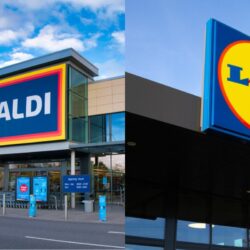While many retailers still like to think and organise themselves in terms of channels, often managed separately, customers no longer think that way. Shoppers now seamlessly switch between different forms of product information, purchasing, collection and returns. So any retailer still making decisions by channel is in danger.
Ironically the new buzz word of omni-channel describes a post-channel world. One which is all about the customer rather than the store – what they want, when they want it, where they want it‘. Customer, customer, customer has replaced location, location, location.
Cross channel dysfunction
Any retailer still optimising individual channel profitability risks being sub-optimal, and at worst, is likely to make completely incorrect decisions across marketing, products and store activities. If customers buy online and return to stores, do the stores get penalised for online returns? Or if a customer researches online but purchases in store, is the business value of online marketing actually recognised?
The Drivers of Change
Retail has always been dynamic but the speed of change is set to accelerate. New businesses can succeed much faster, while failure is often dramatic. What‘s driving it?
-
Technology is creating a digital exhaust of data for retailers to access: to name a few…proliferating faster mobile devices for consumers, near field communication technologies offering seamless scanning, and contactless payment.
-
Consumer behaviour is increasingly complex and informed: they expect informed staff, access to stock, faultless service and joined up marketing messages
-
Competitors are more efficient, lean and profitable: Amazon is the benchmark of automation, replacing variable with fixed costs and ever greater economies of scale
-
Investors and shareholders expect higher rewards: demanding profits, recognising it is possible to generate more cash with less inventory
It‘s all having a profound impact on retailing businesses.
A new cash cycle for products
All products will be available to all customers from all locations. Omni-channel gives huge opportunities to rethink the “stock model” and should allow retailers to widen their range, operate with less stock and deliver higher sell-through.
Turning inventory into cash is the key to success in retail– “revenue is vanity, profit is sanity, cash is reality”. In physical retail, once a format is established, the rhythm of revenue/profit/cash generation turns out to be relatively simple.
However, establishing that rhythm with businesses transitioning to Omni-channel can be extremely painful. Omni-channel breaks the “stock in store” model, requiring retailers to navigate a new cash cycle. All ecommerce pureplays have had to work this out from first principles – Amazon consumed over $3bn before they became cashflow positive. Bezos was notably obsessed about not running out of cash, rather than making a profit.
The critical question for retailers to answer is: What breadth, depth and store inventory allocation achieves the optimal balance of sales/profit/cash and return on capital?
Invest in the people, process and technology to get product selling quickly, and establish the right trajectory for online sell-through. Avoid masking flaws in the cash cycle and blend them into overall “operational losses”. And always distinguish between losses due lack of scale vs. losses driven by a fundamental failure in the cash cycle
Profit by customers, not store
Customers will shop anywhere and everywhere, from a proliferation of devices and locations. Retailers have to completely rethink their relationship with their customers, and how to use the plethora of data available on them to model customer behavi
RELATED STORIES

















